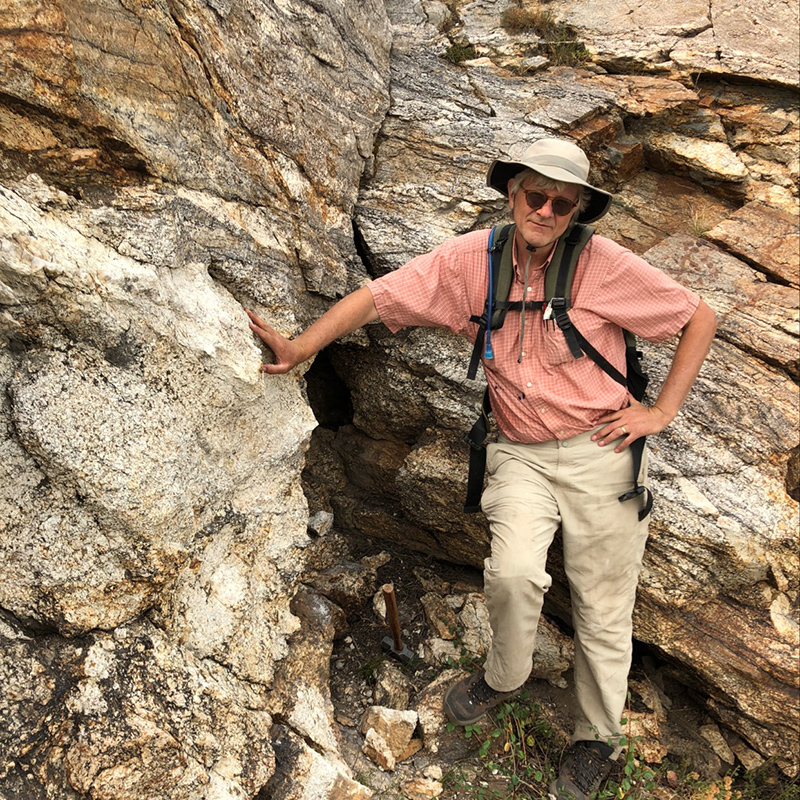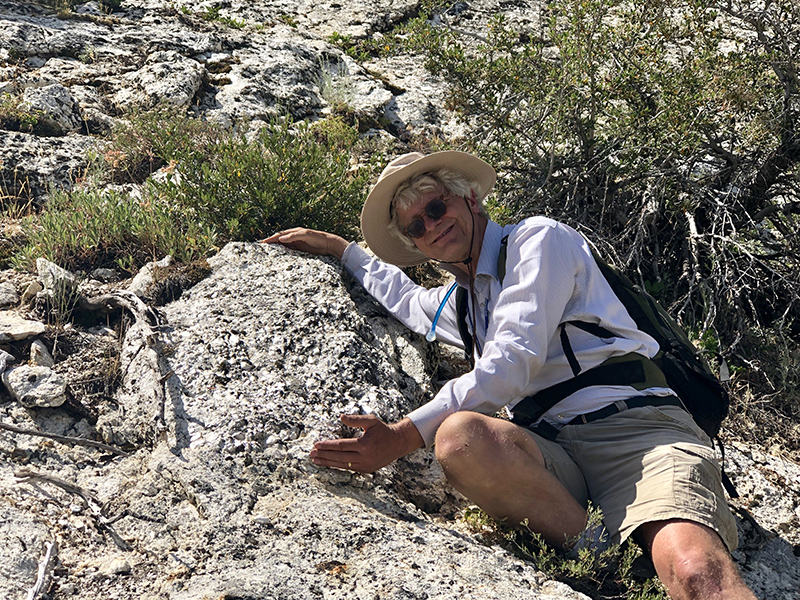College of Arts and Sciences Newsroom

UD geologist shares Nevada field research on YouTube channel
By Dave Larsen
Allen McGrew is a video "rock star." The University of Dayton associate professor of geology shares his field research into the extreme stretching of the Earth’s crust in northeastern Nevada in YouTube videos that have received thousands of views from students, science educators and geoscience professionals.
The videos on the Ruby Mountains — Geology, Geochron and Education (RuGGEd) YouTube channel are intended to increase accessibility to the geosciences in Nevada. They are produced with colleagues from the University of Colorado-Boulder and Great Basin College under a National Science Foundation grant totaling nearly $400,000. The University of Dayton received $200,000 from the grant, which was awarded in 2017 and runs through June.
The research centers on a large section of the western U.S. between Salt Lake City and Reno, Nevada, that has roughly doubled in width over the last 40 million years due to extreme stretching and extension of the Earth’s crust. Focusing on a well-exposed section of crust in the Ruby Mountains-East Humboldt Range-Wood Hills metamorphic core complex, McGrew and his colleagues are examining rocks that were brought to the surface from 12 to 24 miles deep by large, geological faults. Using radiometric age-dating, their goal is to determine the timing and rate of the extension, which is the subject of scientific debate.
“These rocks were deep and they were hot,” McGrew said. “They were probably at least 600 degrees Celsius at their original depths. As they are brought up by these faults, they cool as they get closer to the surface. We use that cooling as a fingerprint for this ‘unroofing’ — the rate at which these rocks were brought up to the surface. You can apply this technique to different minerals and they will begin recording this history at different temperatures, so you can develop a fairly continuous cooling history from over 500 degrees to about 50 degrees Celsius. Then, when they get to the surface they begin eroding and they show up in surface deposits, so you can really track the complete history of their journey.”
Some geologists believe 90 percent of the extension occurred after 17 million years ago, when the North American tectonic plate began to drift over the “Yellowstone hot spot,” a long-lived volcanic center. However, McGrew and others have argued that the extension actually began about 40 million years ago during a series of large geological events, including a widespread outburst of volcanism across Nevada.
“What we’ve been able to show is that the latter view is basically correct,” he said.
McGrew has done field work in northeastern Nevada since he joined the University faculty in 1995. Under the NSF grant, he has made regular trips to the Ruby Mountains, accompanied by five University of Dayton undergraduate students, as well as several from UC-Boulder and Great Basin College in nearby Elko, Nevada. He is interested in the geological history of the mountains, but the area is also of great economic interest because it sits in the heart of North America’s largest gold-producing province.
Currently, he is completing the age-dating and working with his colleagues — James Metcalf of UC-Boulder and Carrie Bruno Meisner of Great Basin College — to synthesize data and prepare their findings for publication.
Meisner produces videos for the RuGGEd YouTube channel that feature McGrew and Metcalf discussing the geology of their research area. The videos are linked to an interactive Google map so geology students and tourists can download the material before field trips or hikes. The channel also has videos about laboratory practices featuring University of Dayton geology students, and videos of the researchers discussing results at Geological Society of America conferences.
“Since it was established in March 2018, the channel has received about 5,000 total views, with nearly 400 unique viewers visiting the channel in the last 90 days,” said Meisner, an earth and physical sciences professor. “The most popular video on our channel, with more than 900 views, features rock star Dr. Allen McGrew talking about the world famous mylonites located in Secret Pass, Nevada. The interactive Google map has been viewed over 2,500 times and can also be accessed using the ‘Everything Elko’ app.”
McGrew enjoys doing the videos, and uses them in his introductory geology and more advanced structural geology courses, which address tectonics and mountain-building processes.
“You can plug it into a class and say, ‘Let’s do a quick field excursion to a classic geological site — in this case the metamorphic core complex — and see what it’s all about,’” McGrew said.
For more information, please visit the Department of Geology website and the RuGGEd YouTube channel.




